Ecological adaptation in Atlantic herring is associated with large shifts in allele frequencies at hundreds of loci
- PMID: 33274714
- PMCID: PMC7738190
- DOI: 10.7554/eLife.61076
Ecological adaptation in Atlantic herring is associated with large shifts in allele frequencies at hundreds of loci
Abstract
Atlantic herring is widespread in North Atlantic and adjacent waters and is one of the most abundant vertebrates on earth. This species is well suited to explore genetic adaptation due to minute genetic differentiation at selectively neutral loci. Here, we report hundreds of loci underlying ecological adaptation to different geographic areas and spawning conditions. Four of these represent megabase inversions confirmed by long read sequencing. The genetic architecture underlying ecological adaptation in herring deviates from expectation under a classical infinitesimal model for complex traits because of large shifts in allele frequencies at hundreds of loci under selection.
Keywords: Atlantic herring; ecology; evolution; evolutionary biology; genetic adaptation; genetics; genomics; genotype; inversion.
© 2020, Han et al.
Conflict of interest statement
FH, MJ, MP, LS, AF, BD, DB, FB, MC, GD, EF, AF, LA No competing interests declared
Figures



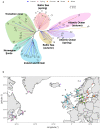






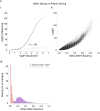



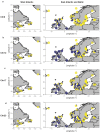
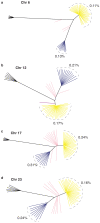




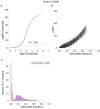


References
-
- Andersson L, Ryman N, Rosenberg R, Ståhl G. Genetic variability in Atlantic herring (Clupea harengus harengus): description of protein loci and population data. Hereditas. 1981;95:69–78. doi: 10.1111/j.1601-5223.1981.tb01330.x. - DOI
-
- Andrén T, Björck S, Andrén E, Conley D, Zillén L, Anjar J. The development of the Baltic Sea basin during the last 130 ka. In: Harff J, Bjorck S, Hoth P, editors. The Baltic Sea Basin. Central and Eastern European Development Studies (CEEDES) Berlin: Springer-Verlag; 2011. pp. 75–97. - DOI
-
- Bekkevold D, Clausen LAW, Mariani S, André C, Christensen TB, Mosegaard H. Divergent origins of sympatric herring population components determined using genetic mixture analysis. Marine Ecology Progress Series. 2007;337:187–196. doi: 10.3354/meps337187. - DOI
-
- Beleza S, Johnson NA, Candille SI, Absher DM, Coram MA, Lopes J, Campos J, Araújo II, Anderson TM, Vilhjálmsson BJ, Nordborg M, Correia E Silva A, Shriver MD, Rocha J, Barsh GS, Tang H. Genetic architecture of skin and eye color in an African-European admixed population. PLOS Genetics. 2013;9:e1003372. doi: 10.1371/journal.pgen.1003372. - DOI - PMC - PubMed
Publication types
MeSH terms
Associated data
Grants and funding
- KAW scholar/Knut och Alice Wallenbergs Stiftelse/International
- Senior professor/Vetenskapsrådet/International
- 254774/Research Council of Norway/International
- GENSINC, project 254774/Research Council of Norway/International
- 33113-B-19-154/Danish Ministry of Food, Agriculture and Fisheries/International
LinkOut - more resources
Full Text Sources
Other Literature Sources

